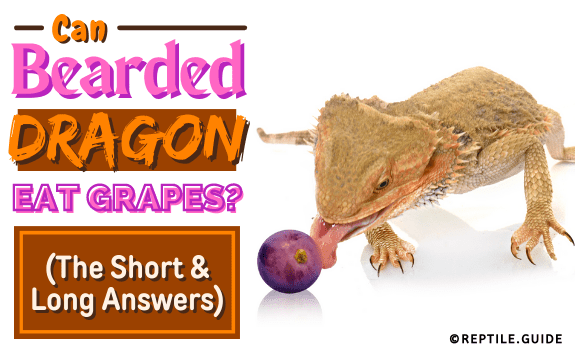Can bearded dragons eat grapes? Yes, they can.
Adult bearded dragons can have up to two grapes a week, while young dragons can have half a grape each week.
The high sugar content of grapes can cause health problems if you feed them to your dragons more often.
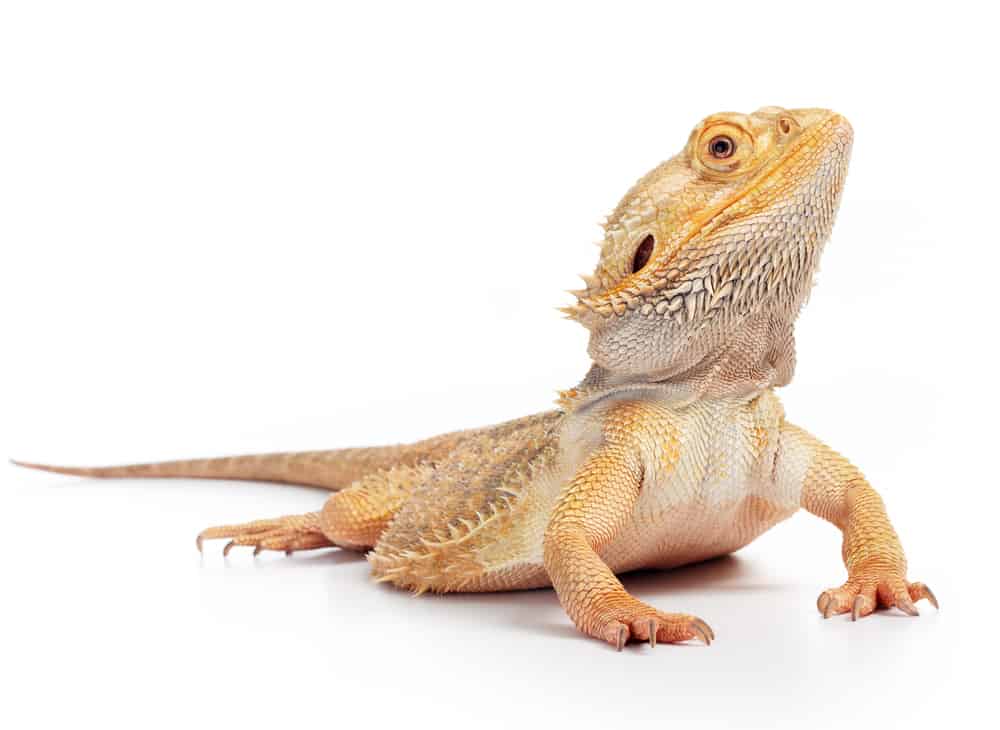
Grape skins, leaves, and fruits all contain certain healthy micronutrients, but you should use seedless grapes for your bearded dragons, since seeds can cause compaction.
In This Article
How Often Can Bearded Dragons Eat Grapes?
While you don’t want to feed your bearded dragon grapes every day, your bearded dragon can eat them more often than fruits like bananas which they should only eat once monthly.
You can safely feed grapes to your bearded dragon once a week.
The recommended amount is no more than two grapes.
Can baby bearded dragons eat grapes? Yes, they can.
Offer young bearded dragons no more than half a grape every week, so they don’t eat too much sugar or fruit acid.
Why Should You Limit the Amount of Grapes You Feed Your Bearded Dragon?
Grapes are an excellent source of both nutrients and minerals. For bearded dragons, the main problem is the sugar content.
A single cup of grapes contains 23.4 g of sugars or approximately 0.7 grams per grape.
Eating fruit sugars more than once a week can lead to obesity in bearded dragons, which is as dangerous to lizards as it is to humans.
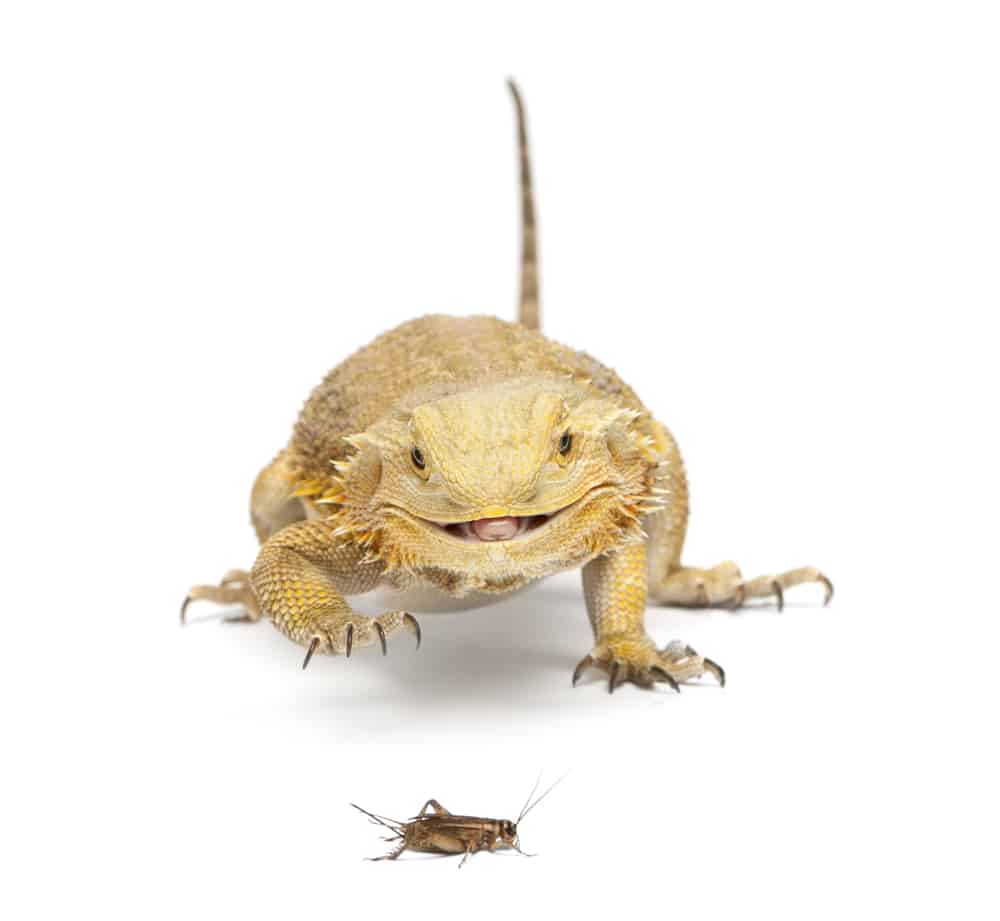
Other potential side effects include heart problems, diabetes, fatty liver disease, and even death.
In the wild, young bearded dragons eat many live foods and start to eat more foliage as they age.
There aren’t many sugars available to them, so sugar has never become a foundational part of their diets. It gives them no advantages, except a short-term energy boost.
Nutritionally, the bodies of bearded dragons treat sugars as a waste product.
The other reason for limiting the number of grapes your bearded dragons eat, and how often is the dietary need of bearded dragons.
These animals require a larger intake of calcium than phosphorus. Grapes offer twice as much phosphorus as calcium.
Feeding bearded dragons too many grapes will lead to an imbalance in the bearded dragon’s calcium to phosphorus ratio.
If allowed to go unchecked, such an imbalance can lead to metabolic bone disease (MBD).
Metabolic Bone Disease (MBD)
As we mentioned above, MBD is the result of an improper diet.
A bearded dragon with MBD can’t live a normal life, and it’s essential to monitor your pet’s diet carefully.
Symptoms of MBD include:
- Leg tremors
- Soft facial bones
- Swollen back legs
- A swollen lower jaw
A bearded dragon with this disorder sustains bone fractures and breaks very easily. They lack muscle strength and often don’t have much energy.
If left untreated. MBD can be fatal. Do your utmost to maintain the correct dietary ratios for your bearded dragon.
The Nutritional Properties of Grapes
Like most fruit, grapes contain a large number of different nutrients and minerals which can be useful to a bearded dragon.
A single cup of grapes contains:
- 288 milligrams of potassium
- 11 milligrams of magnesium
- 15 milligrams of calcium
- 30 milligrams of phosphorus
- 1.4 grams of fiber
- 4.8 milligrams of vitamin C
- 22 milligrams of vitamin K
There are many other valuable nutrients in grapes, but these are some of the major ones.
One cup of grapes contains approximately 32 grapes so, assuming you feed your bearded dragon two grapes once a week, you’re giving it about:
- 18 milligrams of potassium
- 0.68 milligrams of magnesium
- 0.94 milligrams of calcium
- 1.88 milligrams of phosphorus
- 0.09 grams of fiber
- 0.3 milligrams of vitamin C
- 1.38 milligrams of vitamin K
The downside to grapes is that they’re high in sugars. One cup of grapes contains around 23.37 grams or around 1.46 grams of sugar for two grapes.
This is far too sugar for a dragon that doesn’t have sugars in its natural diet. It’s best to use fruits only as a treat.
Do Grape Colors Make a Difference?
There are three major questions that we see often. These are:
- Can bearded dragons eat green grapes?
- Can bearded dragons eat red grapes?
- Can bearded dragons eat purple grapes?
The answer is yes, to all of them.
There aren’t many differences between the nutrient values of different grape colors.
The main difference is that red and black grapes get their colors from antioxidants called anthocyanins.
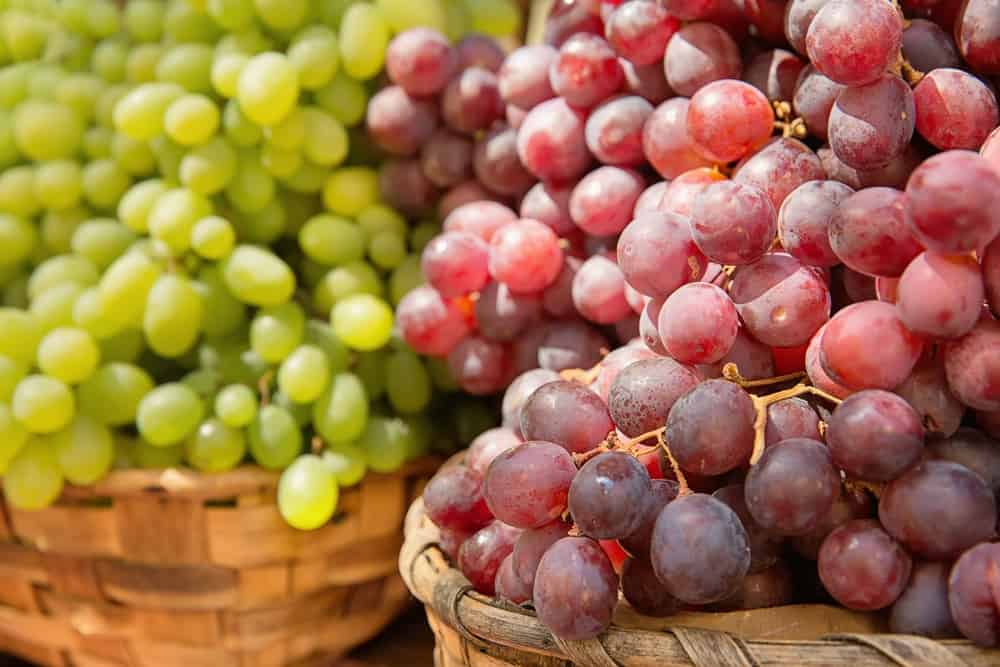
Green grapes don’t contain these antioxidants but contain other chemicals which might be absent in red or black grapes.
The best idea is to vary the grape color every week so that your bearded dragon takes in all the different micronutrients.
Other Fruits to Feed a Bearded Dragon
Bearded dragons can eat many different fruits, and your average dragon loves fruits and vegetables.
As with children and sweets, it’s up to you to ensure that you’re not feeding too many sugar-rich meals or avoiding vegetables.
Here are just a few fruits that bearded dragons can eat:
- Figs
- Mango
- Apple
- Papaya
- Peaches
- Blackberry
- Strawberry
- Banana – only as a treat
- Watermelon – as a rare treat
- Cherry -but only rarely as a treat
Tomatoes are another fruit that is technically safe to feed your beardie. However, we don’t recommend doing so more than once a month.
Some fruits can affect bowel movement, and you should always check how to feed these foods to your dragon.
Keeping the water bowl full will help the dragon manage sugars and avoid impaction.
You can also check out our list of safe plants for bearded dragons.
Can Bearded Dragons Eat Grape Seeds?
Bearded dragons SHOULDN’T eat grape seeds.
All the parts of grapes are loaded with nutrients, even the seeds. However, the seeds can cause compaction in the bearded dragon’s gut, and stop it from pooping.
It’s best to purchase seedless grapes to prevent this problem. Prepare grapes by cutting them into smaller pieces and checking for any seeds.
If your bearded dragons accidentally eat seeds, and you see signs of compaction, give them a warm bath and rub their tummies.
If that doesn’t work, get them to a reptile vet straight away.
Can Bearded Dragons Eat Grape Skins?
Bearded dragons CAN eat grape skin, and we suggest leaving the skin on when you let your bearded dragon eat grapes.
Many of the most beneficial micronutrients and minerals are in the skin.
Most bearded dragons love eating grapes, with or without the skin.
To make it easier for your bearded dragon to eat grapes with the skin on, we suggest cutting the grapes into quarters.
Can Bearded Dragons Eat Grape Leaves?
Yes, bearded dragons can eat grape leaves.
If you feed grapes that come fresh from the farm to your bearded dragons, you may have access to grape leaves.
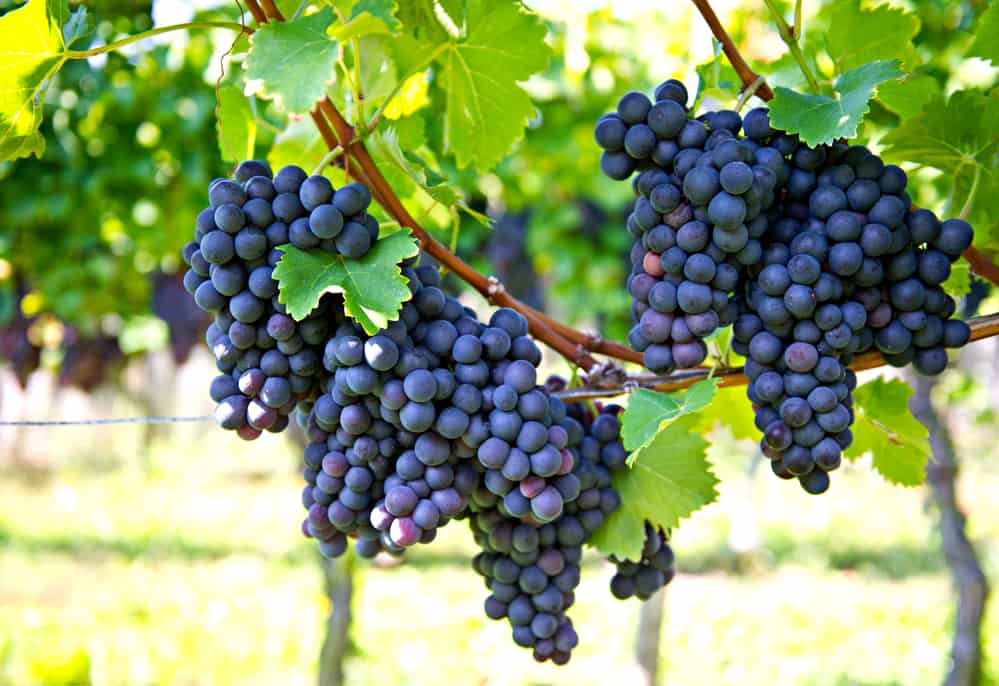
Many bearded dragons love grape leaves and they’re chock full of nutrients. They also lack the harmful sugars and fruit acid that can be a problem when feeding grapes.
Unlike the grapes themselves, grape leaves contain more calcium than phosphorus. This is preferable in any food for bearded dragons.
Other valuable nutrients in grape leaves include:
- Proteins
- Vitamin K
- Vitamin C
- Potassium
As with most foliage, the leaves are even higher in fiber, which is excellent for bearded dragon digestion.
What Should Bearded Dragons Eat?
While fruits make an okay treat, and you can give beardies grapes once a week, fruit shouldn’t make up more than one-quarter of their diet.
Young bearded dragons need a high-protein diet that consists mainly of feeder insects. When combined with leafy vegetables and iron-rich veg, these foods present a balanced diet.
These animals also have a high calcium requirement, so it’s essential that you have (and use) a high-quality calcium supplement.
The easiest type is a powder that you sprinkle on their food.
Always remember that sugars are the archenemy of bearded dragons. Fruits are to dragons what candy is to you (nice, but not an actual meal).
You can have a look at our comprehensive guide to bearded dragon feeding for the full scoop.
We encourage you to offer a variety of foods and to pay special attention to the calcium-phosphorus ratio.
We hope you’ve enjoyed this article about bearded dragons and grapes.
We have loads of other bearded dragon articles, and you might enjoy reading our full care guide.
We also have other feeding guides like how often to feed a bearded dragon and how to make a bearded dragon gain weight.
Which fruits do your beardie like to eat? Drop a comment and let us know.
